You’ll need to examine materials and metal content for purity stamps, conduct magnet tests, and assess gemstone quality using the four Cs. Research the artist’s reputation, market standing, and production numbers to understand rarity factors. Evaluate craftsmanship details, construction techniques, and unique design elements that add value. Calculate intrinsic metal and stone values using current market prices, then compile professional documentation with photographs and comparative analysis. These thorough steps will reveal deeper valuation insights.
Examine Materials and Metal Content
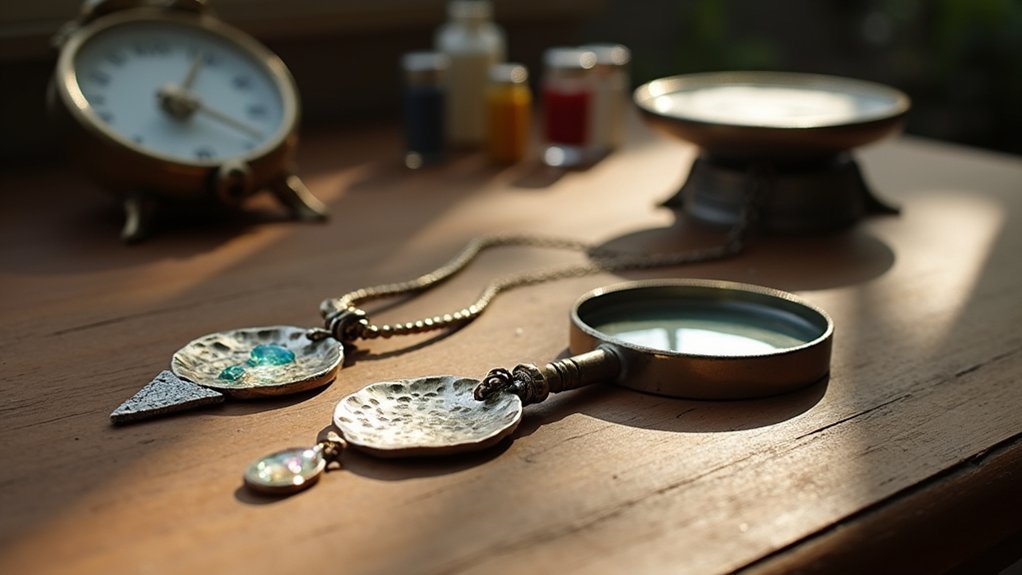
When appraising handmade jewelry, you’ll want to start by examining the metal content through visible stamps or markings on the piece. Look for hallmarks like 925 for sterling silver or 14K for gold, which indicate metal purity and directly impact appraised value. These stamps provide vital information for accurate jewelry appraisal.
Conduct a magnet test to verify authenticity, since genuine precious metals aren’t magnetic. Use a jeweler’s loupe to examine craftsmanship details and finishing quality.
Weight assessment is essential—higher metal content creates heavier pieces, increasing value. Don’t overlook gemstones or other materials, as authentic stones possess unique characteristics identifiable through visual inspection.
Each element you examine contributes to determining the piece’s overall worth and authenticity.
Assess Gemstone Quality and Authenticity
After examining the metal components, you’ll need to evaluate any gemstones present in the handmade piece using the industry-standard four Cs: clarity, color, cut, and carat weight.
Use gemological tools like a jeweler’s loupe or microscope to inspect for inclusions and defects that impact value. To verify authenticity, conduct specific tests such as refractive index measurements or thermal conductivity testing to distinguish natural stones from synthetic alternatives.
You’ll also want to familiarize yourself with common gemstone treatments like heat treatment or oiling, which enhance appearance but influence value.
Document all characteristics and obtain certifications from gemological laboratories to provide potential buyers with evidence of quality and authenticity.
Evaluate Craftsmanship and Construction Techniques
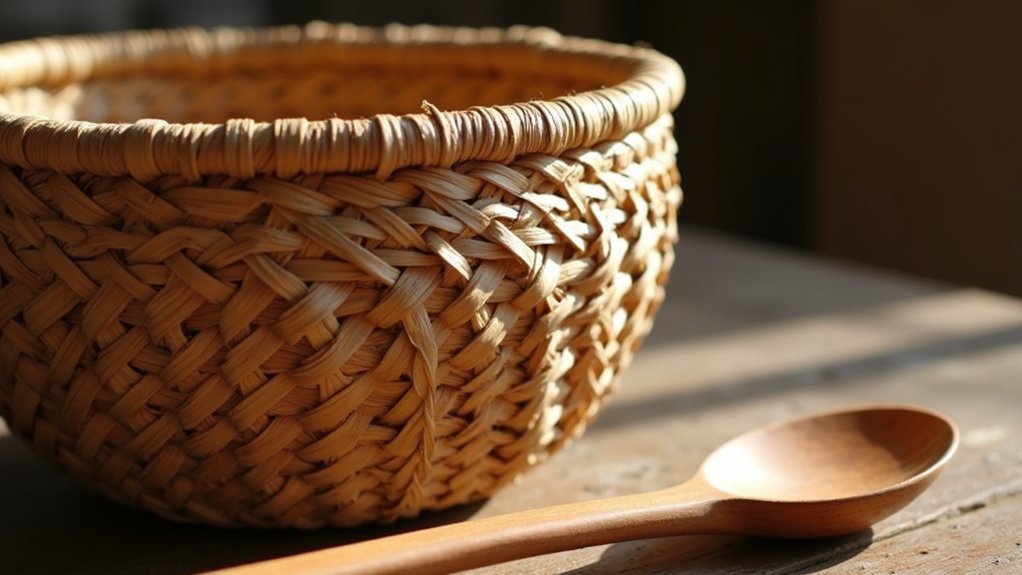
You’ll need to examine the precision of joints, seams, and connections to assess construction quality effectively.
Look for consistent symmetry, balanced proportions, and intricate detailing that reveal the artisan’s skill level.
These craftsmanship indicators directly impact the piece’s durability, aesthetic appeal, and overall market value.
Construction Quality Assessment
The foundation of any valuable handmade piece lies in its construction quality, which reveals the maker’s skill level and dedication to their craft.
During your appraisal process, you’ll need to examine joints and seams with precision. Look for smooth shifts between components, as these indicate superior craftsmanship. Distinguish between hand-stitching and machine work – hand-stitched construction techniques typically signal higher value due to their labor-intensive nature.
Inspect the materials carefully for durability and authenticity. Premium elements like solid metals or genuine gemstones enhance value considerably.
You should also evaluate design functionality and artistic uniqueness. While handmade pieces naturally contain slight irregularities that add character, excessive flaws detract from worth.
Focus on pieces where subtle imperfections enhance rather than diminish the item’s overall appeal and marketability.
Artisan Skill Analysis
When evaluating artisan skill, examine the technical execution that separates amateur work from professional craftsmanship.
You’ll want to focus on construction techniques like precise soldering, intricate carving, or expert hand-stitching that demonstrate mastery. Look for clean joints, smooth finishes, and consistent detailing throughout the piece.
Your artisan skill analysis should identify unique design elements that showcase creativity and technical prowess. These signature touches often distinguish exceptional work from ordinary pieces.
Pay attention to how well the artist executed complex techniques—flawless execution indicates superior skill levels.
Consider the overall condition as evidence of quality construction. Well-made pieces resist wear better than poorly crafted ones.
Research the artisan’s background and training, as established reputations enhance craftsmanship perception and directly impact market value.
Research the Artist’s Reputation and Market Standing
Foundation research into an artist’s reputation forms the cornerstone of accurate appraisal for handmade pieces.
Thorough artist reputation research provides the essential foundation for determining accurate market values of handmade artistic works.
You’ll need to investigate their background, education, and exhibition history to establish credibility. Check their online presence and social media engagement, as these directly influence market demand for their work.
Examine auction results and sales history to identify pricing patterns and establish baseline values.
You should consult appraisal experts who specialize in handmade items for professional insights into the artist’s market standing. Research any gallery representations or collaborations with reputable institutions, since these partnerships considerably enhance an artist’s reputation and marketability.
This all-encompassing approach to evaluating the artist’s reputation guarantees you’re making informed decisions based on solid market evidence rather than speculation.
Document Unique Design Elements and Artistic Features
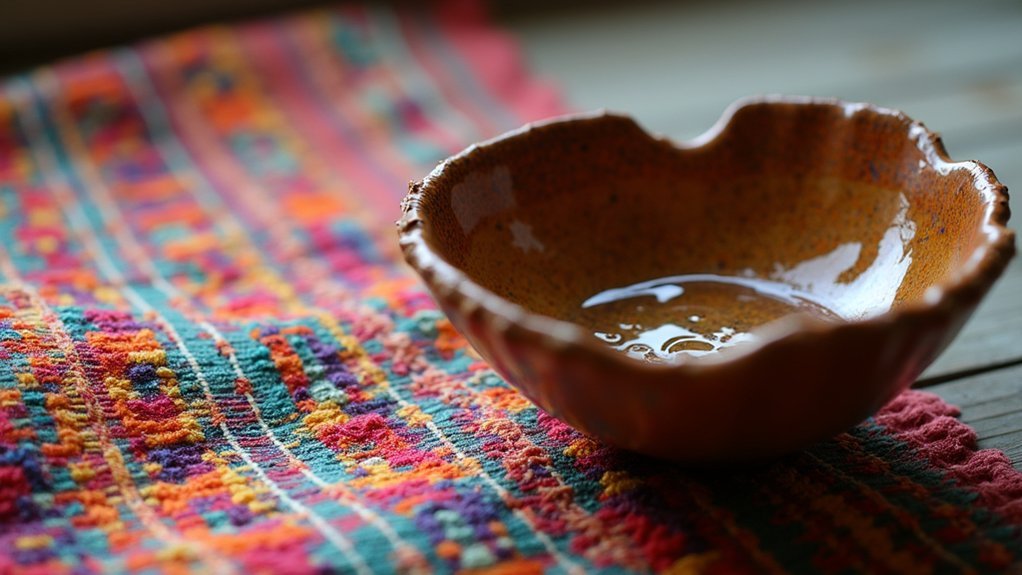
Meticulous documentation of a handmade piece’s distinctive design elements serves as your roadmap to understanding its true artistic value.
You’ll need to examine every detail that distinguishes the piece from mass-produced alternatives, focusing on distinctive shapes, patterns, and textures.
When evaluating craftsmanship, pay close attention to:
- Soldering quality and finishing techniques – Look for smooth joints and professional surface treatments.
- Signs of handwork versus machine production – Identify tool marks, slight irregularities, and personal touches.
- Material composition and rarity – Document uncommon gemstones, innovative metal alloys, and high-quality components.
Assess artistic features by evaluating color combinations, symmetry, and alignment with current trends.
Capture high-quality photographs that highlight these unique design elements, ensuring visual documentation preserves the artistry for appraisers and potential buyers.
Compare Similar Pieces in Current Market Conditions
Once you’ve documented your piece’s unique characteristics, establishing market value requires systematic comparison with similar handmade items currently available for sale.
Research online marketplaces like Etsy and eBay to identify comparable pieces and their pricing structures. Focus on condition, craftsmanship, and uniqueness when evaluating the value of a piece against current market offerings.
Monitor auction results to understand what buyers actually pay versus asking prices.
Social media platforms and artisan communities provide valuable insights into market trends and pricing within your specific niche. Consider seasonal fluctuations that affect demand throughout the year.
If you’re uncertain about your assessment, professional appraisal services can validate your findings.
They’ll analyze current market conditions and provide expert evaluation, ensuring you’ve accurately positioned your handmade piece within today’s marketplace.
Analyze Rarity and Limited Availability Factors
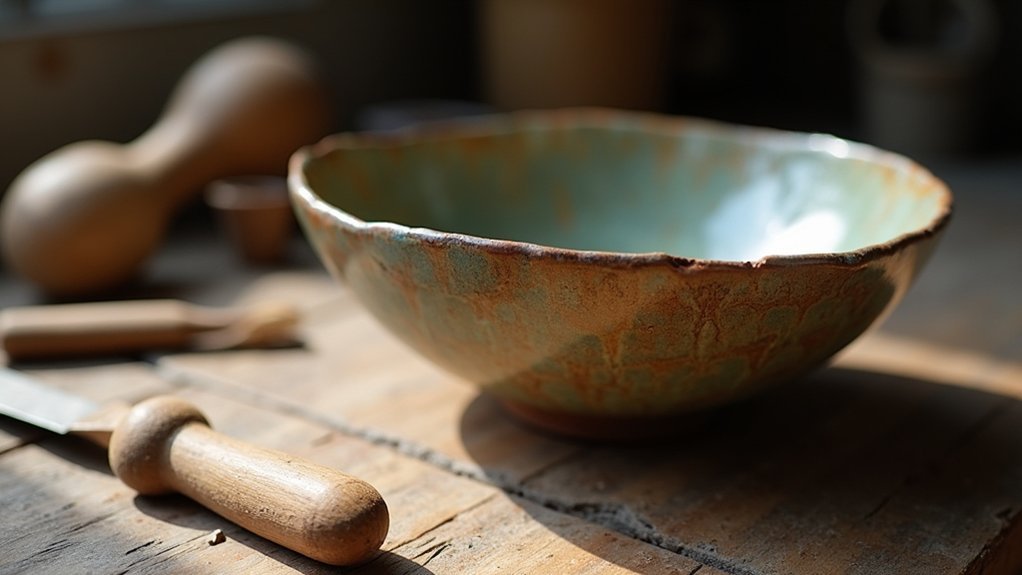
You’ll find that production numbers directly correlate with a piece’s value – the fewer items created, the higher the potential worth.
When an artist releases limited edition runs, they’re creating artificial scarcity that collectors enthusiastically pursue and pay premium prices for.
Market scarcity drives pricing upward as buyers compete for rare pieces that may never appear on the market again.
Production Numbers Impact Value
When determining a handmade piece’s worth, production numbers serve as one of the most influential factors in establishing market value.
You’ll find that lower production numbers directly correlate with higher rarity, which drives up market values among collectors and enthusiasts.
Understanding how production numbers affect your piece’s value requires examining these key elements:
- Serial numbers or production marks – These authenticate your item’s scarcity and enhance provenance.
- Limited edition classifications – Pieces with specific production caps typically appreciate over time.
- Historical sales data – Past pricing trends reveal how production numbers have influenced similar items.
You can command considerably higher prices when your handmade piece comes from small production runs by renowned artisans.
The combination of limited availability and documented rarity creates powerful market demand that collectors actively seek.
Artist’s Limited Edition Runs
Three critical factors determine how an artist’s limited edition runs affect your piece’s appraisal value: the predetermined quantity, the creator’s market standing, and proper authentication documentation.
You’ll find that smaller production numbers create scarcity, driving up market demand and pricing. When renowned artists release limited pieces, they command premium valuations due to established collector interest and proven track records.
Authentication becomes paramount for accurate appraisals. You need proper signatures, certificates, and documentation proving your piece’s legitimacy within the limited run.
Without these credentials, even genuine works lose significant market worth. The value of your jewelry or artwork directly correlates with verifiable provenance and edition numbering.
Collectors pay top dollar for authenticated limited pieces, making thorough documentation essential. Always guarantee your appraisals are accurate by working with certified professionals who understand limited edition markets.
Market Scarcity Drives Pricing
Since scarcity creates the foundation for premium pricing in handmade markets, you’ll discover that rarity directly translates into higher appraisal values.
When evaluating handmade pieces, you’re fundamentally measuring their exclusivity against market demand.
You’ll find three key factors that amplify market scarcity and boost pricing:
- Unique materials – Rare woods, precious metals, or discontinued supplies increase value exponentially.
- Limited production techniques – Traditional methods that few artisans master create inherent scarcity.
- Cultural heritage significance – Pieces tied to specific traditions command premium prices due to authenticity.
Your appraisal process should examine how these scarcity elements combine with emotional buyer connections.
Limited editions and one-of-a-kind creations generate urgency, often triggering competitive bidding that pushes final prices well beyond mass-produced alternatives.
Calculate Intrinsic Metal and Stone Values
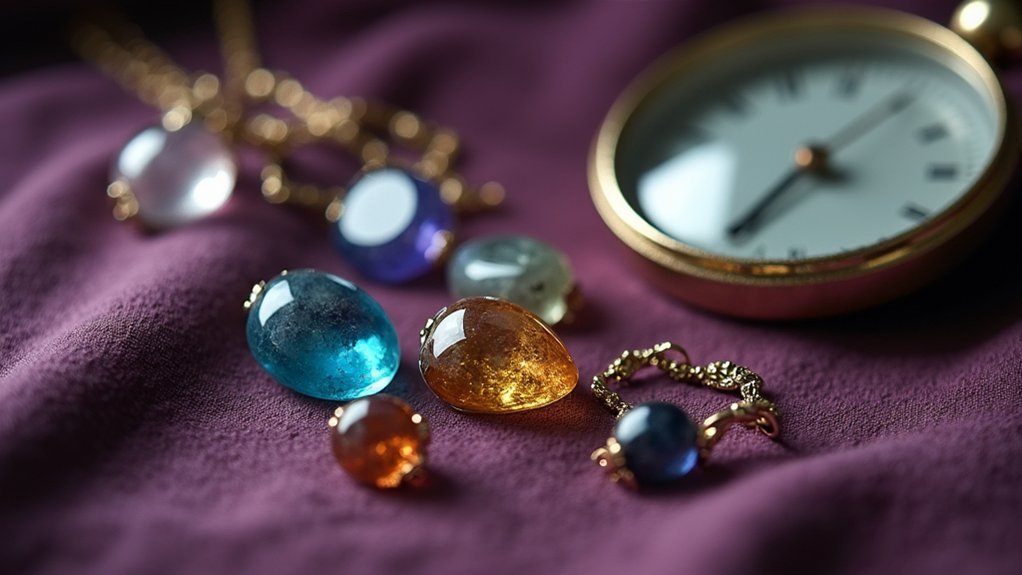
Understanding the intrinsic value of metals and stones forms the foundation of any accurate jewelry appraisal.
To calculate intrinsic metal values, you’ll weigh the piece in grams and multiply by the current market price per gram for the specific metal. For 14K gold, multiply the weight by 0.583, then by gold’s current price since it’s 58.3% pure.
For gemstones, multiply carat weight by the market price per carat for that stone type. Remember that rarity and quality greatly impact value.
When evaluating diamonds, you’ll need to assess the Four Cs—carat, cut, clarity, and color—as these directly affect pricing.
Always consult reputable sources for current pricing, as values fluctuate with market demand.
Document these calculations thoroughly in your appraisal report.
Consider Age and Historical Significance
While intrinsic material values provide the baseline worth of handmade jewelry, the age and historical importance of a piece can dramatically multiply its appraised value beyond mere metal and stone calculations.
When evaluating these factors, you’ll need to examine several key elements:
- Age classification – Pieces over 100 years old typically qualify as antiques, making them highly desirable to collectors.
- Historical importance – Items connected to notable events, artists, or cultural movements like Art Deco or Victorian eras command premium prices.
- Provenance documentation – Verified ownership history linking pieces to influential figures considerably elevates value.
You should verify authenticity through traditional techniques and materials specific to certain cultures or eras.
Authentic handmade pieces showcasing period-appropriate craftsmanship often achieve higher valuations due to their rarity and cultural importance in today’s market.
Compile Professional Appraisal Documentation
You’ll need to create thorough documentation that establishes your handmade piece’s value and authenticity for insurance, legal, or resale purposes.
Your appraisal report must include specific essential components that meet professional standards and protect your interests.
Follow proven documentation practices to guarantee your appraisal withstands scrutiny and provides maximum credibility when you need it most.
Essential Report Components
Five critical elements form the backbone of any credible handmade item appraisal report.
These essential report components guarantee your professional appraisal meets industry standards and provides reliable documentation for insurance, resale, or estate purposes.
Your extensive report must include:
- Purpose statement and detailed descriptions – Clearly identify why you’re seeking the appraisal and provide thorough documentation of materials, dimensions, and unique characteristics.
- Current value assessment – Include market research-based pricing with comparative analysis of similar handmade pieces.
- Visual documentation and credentials – Attach high-quality photographs from multiple angles alongside your appraiser’s qualifications and certifications.
Each component works together to create a transparent, credible valuation that’ll stand up to scrutiny from insurance companies, buyers, or legal proceedings.
Documentation Best Practices
Professional documentation transforms a basic handmade item assessment into a credible, legally defensible appraisal that’ll protect your investment for years to come.
You’ll need high-quality photographs capturing every angle, detail, and unique characteristic of the piece. Document all materials, artisanal techniques, and craftsmanship elements thoroughly. State your appraisal purpose clearly—whether for insurance purposes, resale, or estate planning—as this context directly influences valuation approaches.
Structure your report thoroughly, including detailed descriptions, market comparisons, and supporting evidence for your assigned value.
Don’t forget to list your professional qualifications and relevant certifications prominently. This establishes credibility and guarantees your documentation meets industry standards.
Proper appraisal documentation protects both you and your clients while creating a permanent record of the handmade piece’s authenticated value.
Frequently Asked Questions
What Is the Best Way to Get Art Appraised?
You’ll get the most accurate art appraisal by hiring a certified appraiser who specializes in your artwork’s specific type. They’ll have expertise to properly assess value, unlike general appraisers.
How Accurate Is a Jewelry Appraisal?
Your jewelry appraisal’s accuracy depends on the appraiser’s qualifications and market knowledge. You’ll get estimates, not guarantees, and insurance appraisals typically show higher values than actual resale prices you’d receive.
What Is the Best Way to Get Antiques Appraised?
You’ll want to find a certified appraiser who specializes in your specific antique type. Choose someone who’s a member of recognized organizations like the American Society of Appraisers for professional standards.
How Do I Get an Honest Jewelry Appraisal?
You’ll get honest jewelry appraisals by choosing GIA-certified appraisers with handmade experience. Don’t accept instant evaluations—demand detailed reports describing materials and craftsmanship. Compare multiple appraisals to identify discrepancies and guarantee fair valuations.
In Summary
You’ll get the most accurate appraisal by combining multiple evaluation methods rather than relying on just one approach. Don’t skip the documentation process—it’s essential for insurance and resale purposes. Remember that handmade pieces often carry emotional and artistic value beyond their material worth. When you’re uncertain about any aspect, consult certified appraisers who specialize in handcrafted items. They’ll provide the professional insight you need for confident valuation decisions.

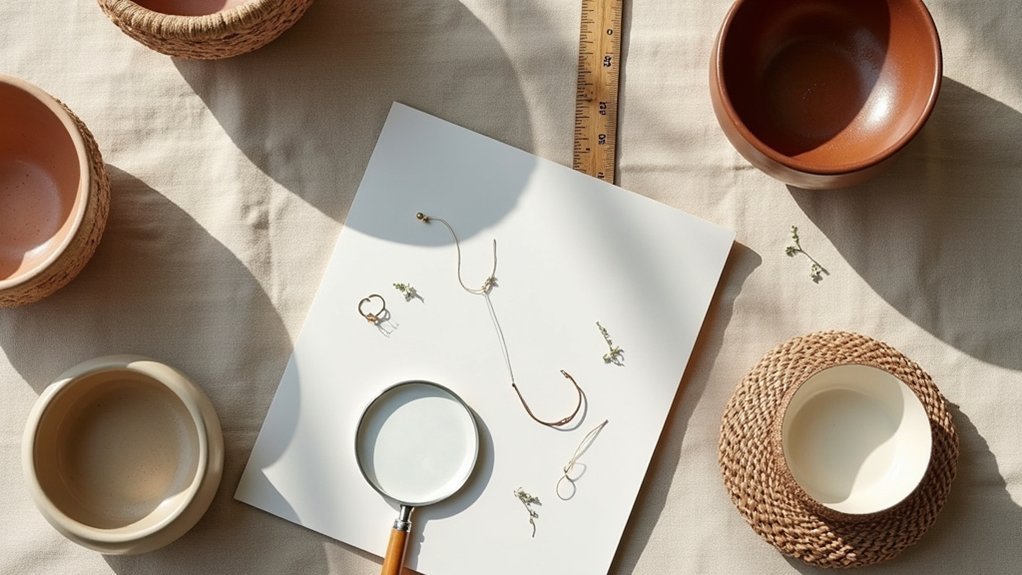



Leave a Reply